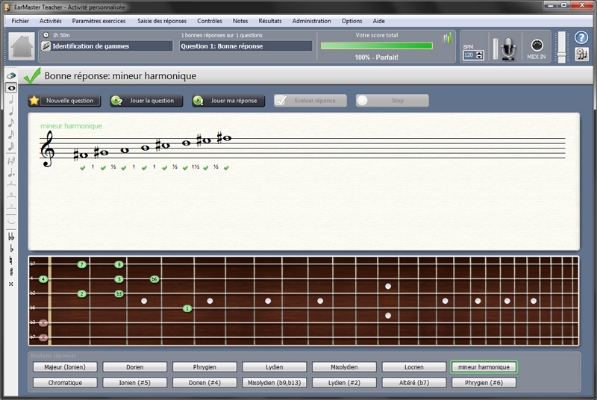
- Earmaster pro 6 ear training software for mac os#
- Earmaster pro 6 ear training software software#
- Earmaster pro 6 ear training software free#
The release of EarMaster 5.0 also marks a name change for the editing company from Miditec to EarMaster ApS.
Earmaster pro 6 ear training software for mac os#
EarMaster 5.0 was released in 2005 in both a Pro and a School version, first for Windows and later for Mac OS X. EarMaster Pro 4.0 and EarMaster School 4.0 follow in 2000, with a new interface and more options. In 1998, EarMaster develops the first educational version of its ear training software, EarMaster School 2.5, in collaboration with 29 music teachers. EarMaster 2.0 was launched in 1997 and was the first version to be commercialized online. It was distributed by Roland in Scandinavia and available in 5 languages. The first proprietary version of EarMaster was EarMaster 1.0, released in 1996 by Miditec.

Earmaster pro 6 ear training software software#
”Listening is the key to everything good in music.The prototype of EarMaster was a DOS-based software programmed in 1994 by Hans Jakobsen.
Earmaster pro 6 ear training software free#
Check out Earmaster Pro 6 or free online programs like and Keep developing your aural skills, reap the benefits and become a real musician! There are a lot of ear training software programs and websites available today. Here’s a website that learns sight singing .Įar training software can be a great tool to improve your aural skills. Learn to read and sing notes on the staff or create melodies and write them down on paper without instrument. Gradually add a note to your melody once you get the pitches right and you feel comfortable to do so. Try to imagine a melody with five notes and play it on the guitar.

Once you get the hang of it add a note to your melody. From those notes create a melody in your head, sing it out loud and then try to play it on your guitar. What is played first the I, IV or V? What is played second, third and fourth? If you nail this take it a step further and try it with a I IV V VI progression. Listen back and try to identify the order of the chords. Same thing here, record a chord progression, pause and name the order of the chord progression. Come up with as many different progressions as possible using the I IV V. For example: I IV V IV or I V IV I or I IV I V. Start with a I IV V progression and play the chords in random order. Listen back and and try to identify the chords. Pause after each chord and then say the name of the chord. Record yourself playing different chords, major, minor, sus2, sus4, major 6th, minor 6th, minor 7th, major 7th, diminished, open chords, barres, power chords, etc. Then listen back and try to identify the intervals one by one.Īs with the previous exercise you can do the same with chords. Record 30 minutes of different intervals this way. You can also record yourself playing an interval, then pause a few seconds and say the name of the interval. Play the first note of the scale and sing it’s interval, play the second note of the scale and sing it’s intervals and so on. Sing thirds, fourths, fifths, sixths and sevenths. – Play a random root note and sing the scale, then play the scale to hear if your pitches were correct.

– Sing and play your scales simultaneously. – First play a scale on the guitar and then try to sing it. You can use Anytune to transcribe songs on your Ipad. Use software like Transcribe to slowdown, loop and change the pitch of the song to make transcribing easier.

Work out the pitches and rhythms of a song. Figure out chords, chord progressions and solos by ear.


 0 kommentar(er)
0 kommentar(er)
